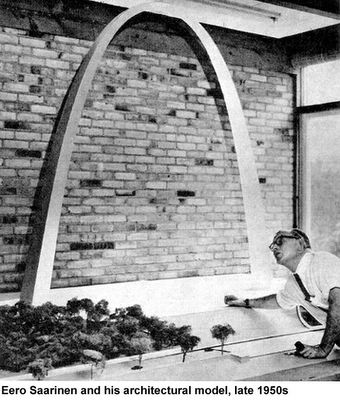The October 2012 issue of Vanity Fair shares results that 46% of the 1,027 adults polled nationwide find The Gateway Arch the least impressive national landmark.
What an odd question to ask people. But since they asked, Americans are good with natural occurrences like falls or canyons, they’re even good with carving presidents into the side of a mountain. But wholly man-made landmarks are ripe for a shrug.
After an initial wave of irritation that anyone slam on our Arch, I remember that I used to take it for granted. It’s always been there, and once you go up inside of it and catch the view, what’s left?
If I – as a proud St. Louisan – have treated it as the most boring ride at an amusement park, then the views of 1,027 people who may or may not have seen it in person are acceptable. I don’t see the point of The Alamo, because anything to do with war or battles bores and confuses me. But I’ve also never seen it, so it’s just a knee-jerk reaction.
Beauty for Beauty’s Sake
Americans tend to be practical people who want things to serve a purpose. Admirable form like the Chrysler Building also has a function as an office building, so it’s acceptable. Even the Seattle Space Needle (which is only a couple of years older than the Arch), goes a bit beyond being a symbol of its city with a restaurant at the top so it has some function beyond the views.
But the Gateway Arch is basically a modern sculpture with an elevator. Take the elevator up to see views to the east and to the west in a narrow curved space that’s not conducive to hanging out. And back down you go.
It’s truly a symbolic, minimalist art piece. An understanding of geometry, architecture and modern construction makes it impressive. But all those concepts may be too subtle for the room, naturally leading to the theoretical question, “What is the point?”
What is the point of a flower? We understand its benefits for bees, butterflies and the environment, but they are not crucial to human existence. But their beauty and fragrance can move our souls, and many are willing to cultivate them for just that purpose – beauty for beauty’s sake. And that’s The Arch, as well.
The Arch has other purposes beyond the beauty of its facade as the changing light and dark of day dances around it.
It is the symbol of a time in America when power and progress could be poetic.
It is a beacon that guides you without a compass, and takes you to the river.
It is the impossible made real.
It is the strength inherent in grace.
It is eternally modern, but with the erosion of American dignity, it has become nostalgic.
I didn’t realize all these things about The Arch until an early 21st century sunset ride as a passenger in car gave me the opportunity to simply gaze at it. And these realizations hit me fast and forcefully. Suddenly, I “got it.” And I was proud of our City for once having the towering vision to persevere for decades to build something that was only and simply beautiful and symbolic. It’s as simple as a flower, which is a complicated thing.
Taking The Arch for granted is not just a Vanity Fair poll result. How many decades did it take for St. Louis to light it at night? And how many of you in St. Louis have never been near it, touched it, or been up inside of it? None of these things are crucial, but it does stir the soul, and you don’t know how powerful and empowering that can be until it overtakes you.
My absolute favorite summary of the power of the Gateway Arch comes from Joe Thebeau, in the Finn’s Motel song “Eero Saarinen“:
Eero, arching, westward over my city
Stainless and brilliant
Eero, arching, skyward into the universe
Expanding, expansive possibility.





























